
Digital Role Play is a digital tool, normally delivered online, designed to support a learning or coaching strategy in which the trainees are asked to play their own a role, involving a discussion with someone else on what should be considered a tough or a critical topic.
So, for example, it can be a simulation of a conversation between a Leader and an employee, between a salesperson and a client or whatever else. The scope is to discuss a topic that typically includes some elements of verbal negotiation.
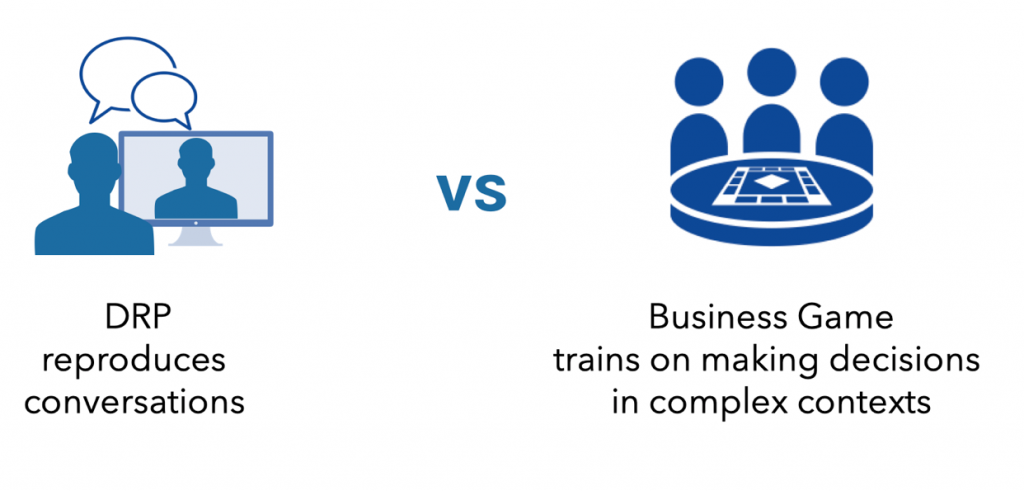
There are other solutions on the market focusing on making decisions and managing complex and multi-variable contexts. Those are (or should be) normally defined as business games.
In these cases, the scope is mainly focused on analyzing one scenario or one situation and making decisions based on the available information.
For example, to manage risk or to optimize results. This article focuses on the first category.
Learning by Doing produces better results
Digital Role Plays are one interesting evolution of Role Play, a well-established learning strategy based on the principle of Learning by Doing. As you surely familiar with, Learning by Doing refers to a theory of education expounded by American philosopher John Dewey.
He theorized that learning should be relevant and practical, not just passive and theoretical.
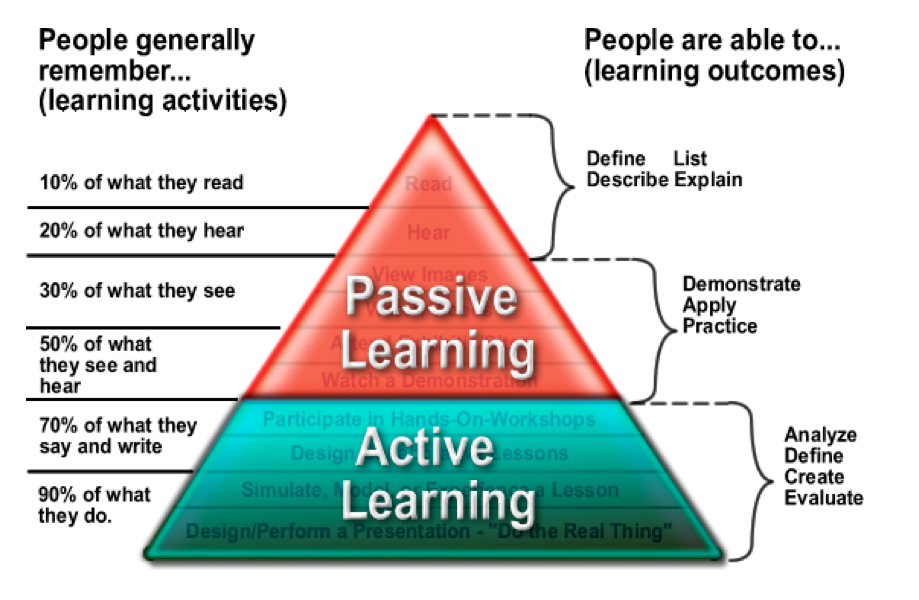
Learning by Doing is based on learning from experiences. This approach allows learners to experience something with minimal guidance.
Learning by Doing assumes that learners learn best by being involved in the learning process.
Instead of being told or showing the answers, they are presented with a question, problem, situation, or activity, which they must make sense of for themselves.
We have previously discussed the benefits of learning through interactive storytelling, a smart way to make Learning by Doing very actionable, in this interesting article (“Why Use Interactive Storytelling in Training: Benefits of Role Plays”) that I recommend if you would like to learn more about how interaction and narrative put together can deliver great results.
In general, most businesses are aware that the more experience an employee has with a given situation, the more effective he is in that situation. It would seem to follow, therefore, that the best way to teach anybody is to let them work on a job that requires the skills we are trying to teach.
This is a bit circular since it means letting an employee attempt to use skills that we know he doesn’t have in order to teach him those skills.
The best way to learn how to do a job is to simply try doing the job, with no preparation in particular, but with an expert available for help as needed to provide consistent feedback.
Also, several theories suggest that the implementation of simulation-led training strategies perfectly fit the adult need of learning by experience.
In the following image, I mention only a few, but if you are interested in delving deeper into the subject, take a look at this interesting article (“From Critical to Empowering Conversations: Let’s Change the World Using the C-FACTOR”).
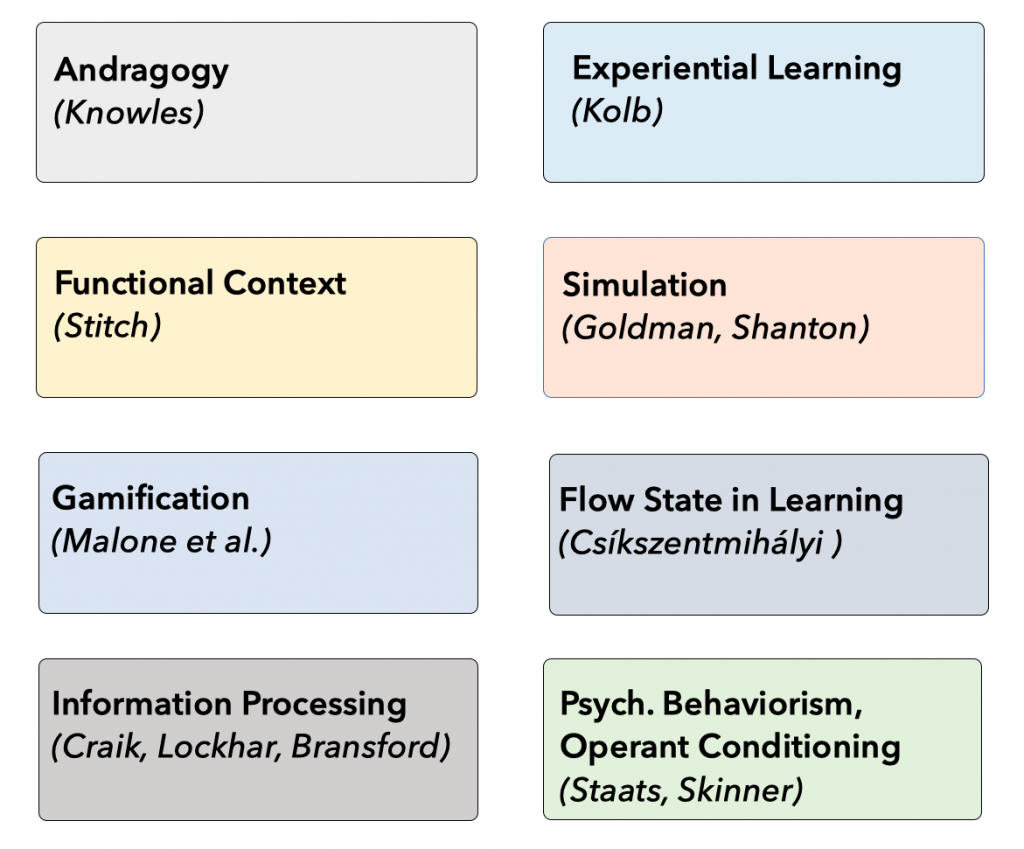
All in all, what matters is that Digital Role Play perfectly fits with the idea of providing learning strategies based on experiential learning.
What does the word “Digital” add to traditional Role Plays?
Let’s focus now on the meaning of the word “DIGITAL” to see what the “old” and the “new” have in common and how they evolved.
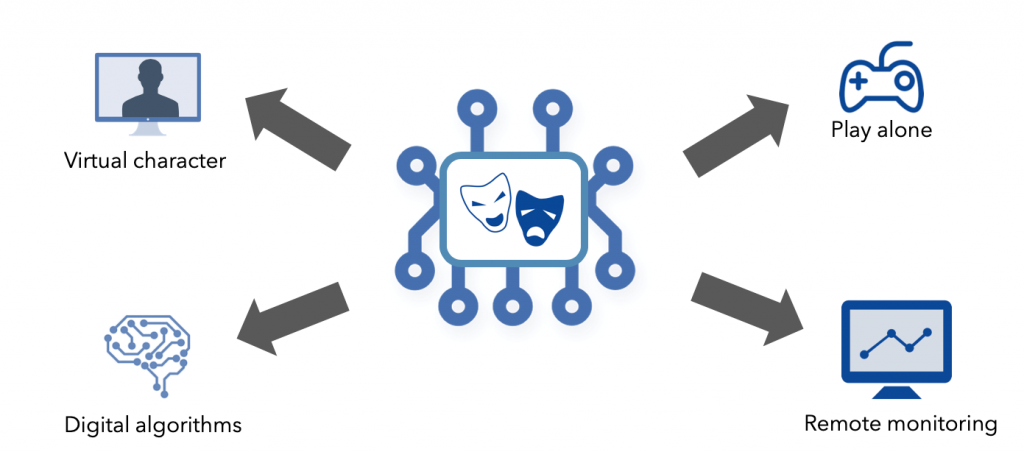
As a main characteristic, you would expect that your trainee interacts with a digital or virtual character through a screen. Instead of sitting in front of you while both of you play one role in the conversation in real time.
Then of course, another feature you would expect from a Digital Role Play is that the trainee will play alone, without the need for you to attend or participate during the conversation.
This is very important for at least two reasons:
- It reduces the stress of being ‘watched,’ and
- It allows to plan for multiple sessions in a scalable way
Another important feature that you may expect are more or less sophisticated algorithms controlling the interaction and thus, adding a life-like flavor to the experience in terms of the level of realistic unpredictability of the situation.
Finally, since it is digital, this tool would normally track the interaction thus providing you, as a L&D department, the option of monitoring ongoing practice while being able to review both the effort spent and the results achieved.
Digital Role Plays perform better than traditional ones
As explored in detail in this article (“Digital Role Plays, the Best Way to Develop Conversational Leadership”) Digital Role Plays introduce five benefits in the application of Role Play techniques that are not available when practicing in traditional face-to-face scenarios:
1. Consistency of practical training
Behavioral changes require times and consistent practice. DRP platforms make it sustainable from an economic and logistic points of view.
2. Scalability
Everyone deserves the opportunity to improve. DRP offers the application of the effective “Learning by Doing” approach to all the employees in a very immediate and manageable way.
3. Metric driven
DRP solutions provide a set of homogenous and unbiased behavioral metrics for the entire learners’ community. It allows L&D professionals to have a complete picture in order to set objectives and design specific actions where required.
4. Self-awareness through conversation review
Having the opportunity of self-reflection is a key element in personal development. The best Digital Role Play allows the learner to play back the performed sessions, adding additional behavioral insights to build internal and external self-awareness.
5. Safe environment
DRP solutions make trainees feel “safer” than when they play a traditional role play. In fact, they remove that feeling of “being judged during confrontation”, which can embarrass and even block some people, in favor of a more natural way to express themselves in the role play session.
The way in which a Digital Role Play platform is normally designed is a primary reason for these benefits.
In fact, each of the following seven components delivers a specific piece of the entire experience:
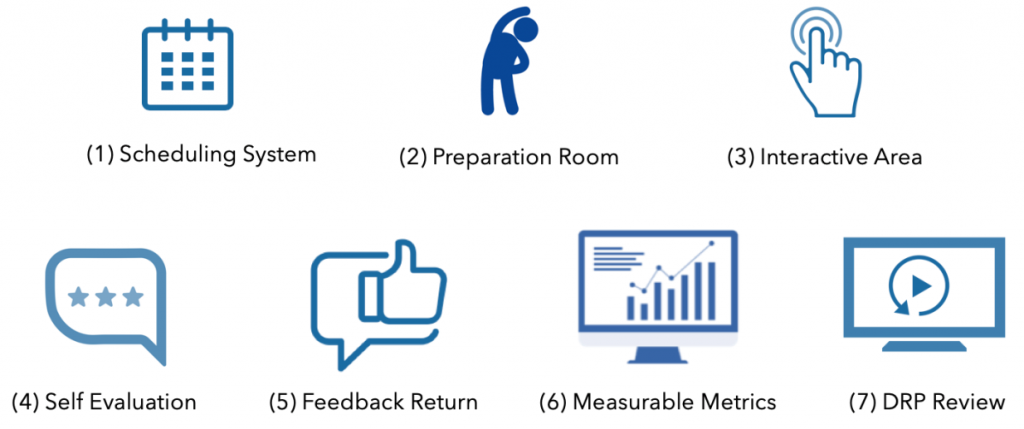
- A way to schedule the exercise in advance
- Somewhere for your trainees to prepare for the context
- An area to play the role play in a manner that makes it as interactive as possible
- A moment to reflect on one’s own performance before receiving feedback
- The possibility to debrief and learn from the experience through emotional feedback
- A set of measurable metrics
- The possibility to review the Digital Role Play to take a closer look at the action after the feedback has been delivered
Let’s explore each element in detail.
1. The scheduling system
One key characteristic of a Digital Role Play is the way users can schedule their training activity.
Automatic scheduling minimizes the organizational impact, while increasing the emotional engagement and commitment of users towards the scheduled individual training program:
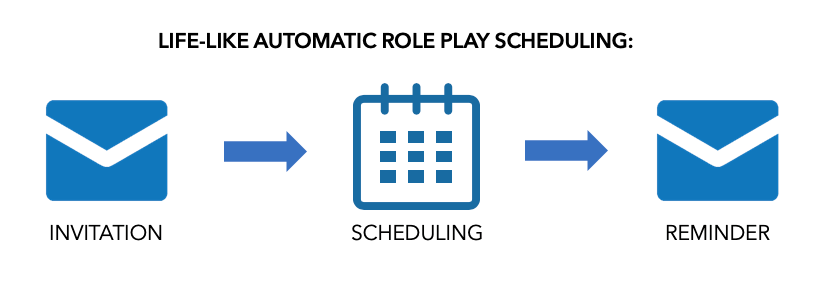
- Once the individual training path is defined, the platform sends to the user periodic Doodle Invitations to schedule Role Plays
- The user chooses the date and time of the meeting and an appointment is scheduled on the calendar, just like for real life meetings
- The platform sends reminders to the user as the appointment approaches and, in case of late show or cancellation, a reminder is sent
People are so used to sticking to their calendar that the simple fact of scheduling one life-like meeting makes trainees more prone to being disciplined about their training. There is a scientific basis to this. As you surely know, numerous scientific studies have demonstrated that our brain does not differentiate between real life and simulation.
In this article (“Three Case Studies and One Strategy to Keep Users Engaged with Digital Learning”) I explore through several case studies on the impact of this specific component in terms of trainee engagement.
2. A preparation room
As you know, one important part of any role play is providing enough background about the scenario that is going to be played so that trainees can figure out their own role, the scope of the exercise and some additional elements upon which to define a strategy.

Digital Role Plays need to provide at least the same elements. And the complexity of a human-to-human conversation should be reflected in the availability of details such as:
- Who is the character, including his social background, his personality and approach and his hierarchy of needs
- Where and why the conversation should take place: where it is physically set, what role the trainee is going to play and other details about the context, such as the scope of the conversation and any intermediate goals to be achieved
- And finally provide enough elements to understand what type of behaviors will be tested, assessed and measured
This allows you to deliver a tool so that your trainees can prepare before they play the interaction.
3. The interactive area
Once trainees start the Digital Role Play (and what you see here is just one example of the many user interfaces available on the market), you would normally face a one-to-one conversational situation in which the character is sitting in front of them, resembling what would be the user experience during a real role play.
The setting can vary and, as we said before, you may face a puppet (either cartoon or 3D model) or a human being filmed in video.
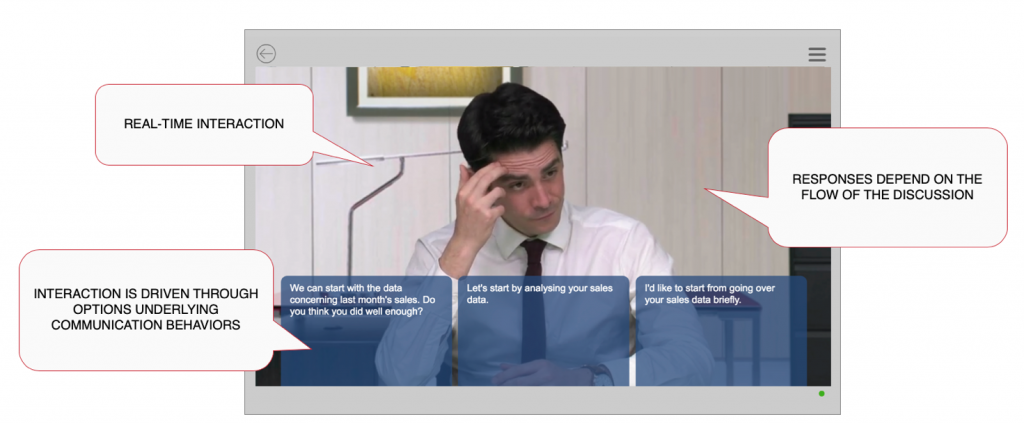
The way trainees usually interact is by selecting options on the screen representing things they can say. Each sentence represents an observable behavior and allows for the flow of the conversation to follow one’s own style and topics.
Here you may find Digital Role Plays based on branching techniques, and in that case each option is hard wired with the correspondent reaction of the character or, in other cases, more sophisticated solutions based on AI algorithms and machine learning, where the connection between the options and the reactions is less predictable (more on this at the end of this article).
On average, you should expect a Digital Role Play to last between 10 to 15 minutes of seamless real-time interaction.
This is normally what you would also expect from a traditional role play.
4. Self-Evaluation
At the end of the interactive session, it is very important to let users reflect on their own performance before they receive feedback.
This is not just for training, it should happen in real life too, but we know how difficult it is.
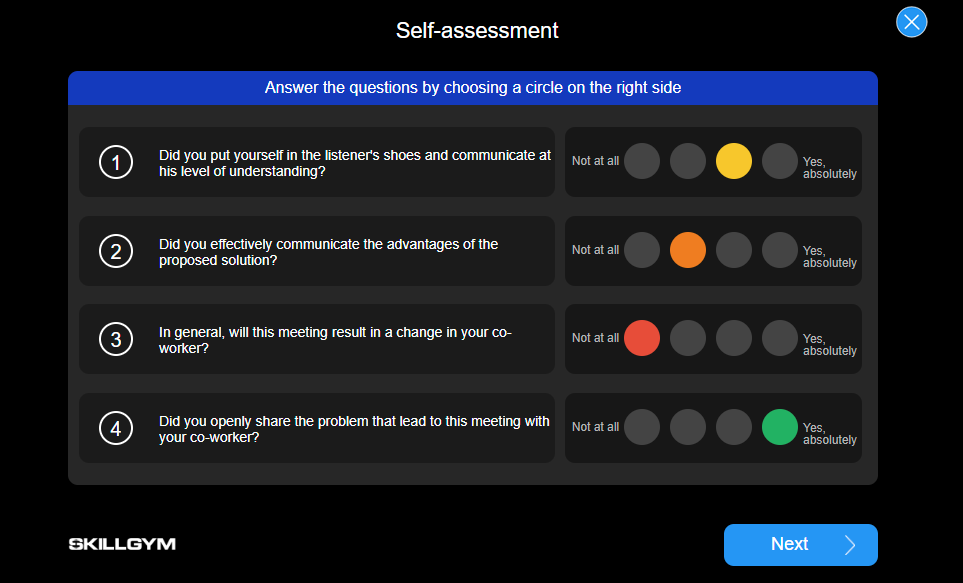
In this area, the Digital Role Play provides a list of questions to reflect on. They can be either standard questions or related to the specific action just played.
In either case, it is a useful time for users to stop the action and take a breath while reflecting on their conversation.
The score with which they rate their performance will normally influence one key score called Self-Awareness.
5. Feedback
The most powerful, still not analytical, feedback that a Digital Role Play can provide to users is the warm, direct, personal, emotional opinion of the characters themselves.
When detailed with specific examples on what actually happened during the conversation, it will provide a very powerful indication about the connections between causes and effects.

We all know how difficult it is to figure out what the other person thinks or, more so, what the other person will do after completing the conversation with them. Receiving elements about how they lived the experience provides very important clues that will prove as experience accelerators in Learning by Doing.
I recommend reviewing this article (“Why Stimulate Self-Awareness by Using Both Sides of Your Brain?”) to discover more about why it is important to trigger both sides of the brain, providing both emotional and analytical feedback to the trainee.
6. Measurable metrics
The next way to provide feedback by showing meaningful metrics. Most Digital Role Play platforms have several ways to measure how the performance was influenced by behaviors and how behaviors developed and moved through the conversation.
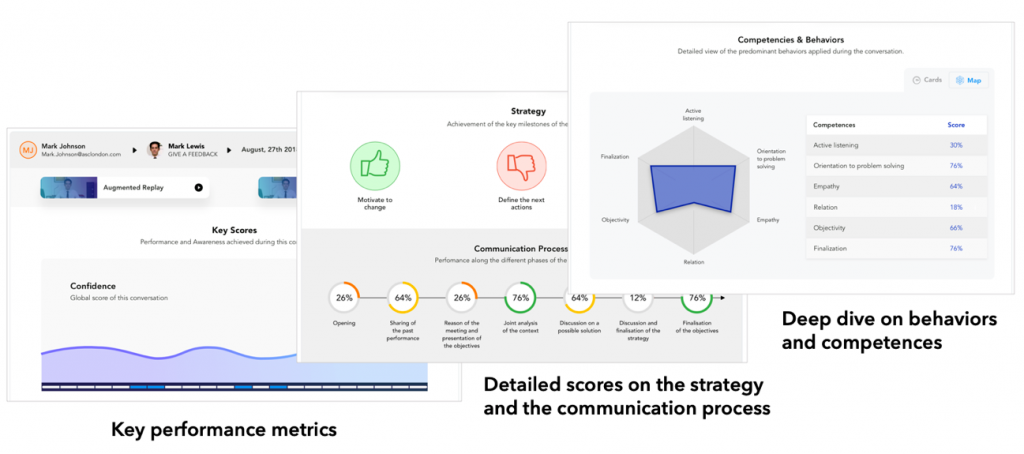
Generally speaking, it is quite interesting to provide a blend of elements ranging from the general performance (answering the question: “How successful was this conversation?”) down to more detailed elements such as the flow of the communication process, the coherence of the negotiation strategy and the blend of competencies used along the way to ensure effective communication between parties.
It is also important to track certain metrics related to the discipline of training. In this article (“8 Key Metrics to Ensure a Successful Practical Training on Critical Conversations”) I explore the eight fundamental metrics (four related to results and four to discipline) that I consider paramount to track when designing a successful conversational leadership training program.
7. A way to review the experience
Finally, the best digital role play platforms provide a way to review the entire conversation. The idea is to attend and listen to the action from a third-party position in order to review the performance and reflect on details.
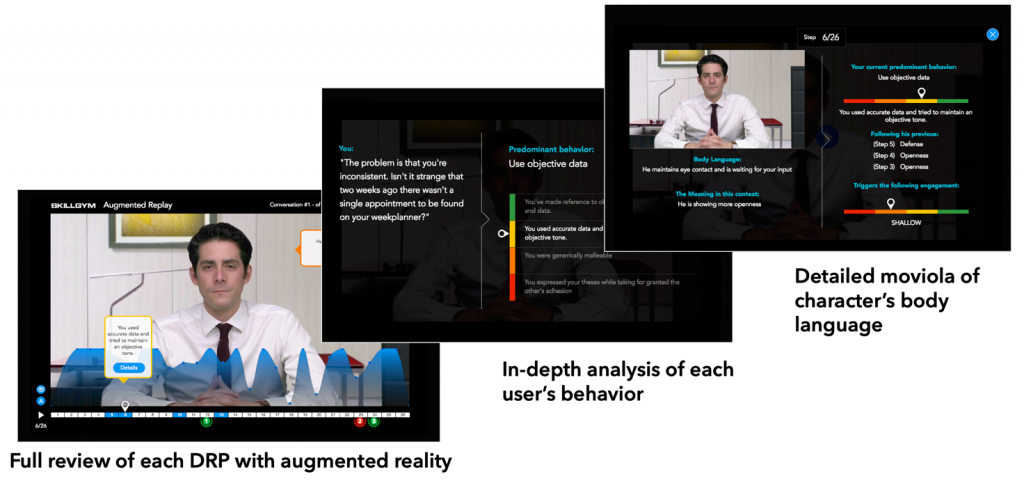
Typically, the two main things that one user may want to review are:
- On one side, their own behaviors as applied along the way. Imagine a way to review each sentence, identify the underlying predominant behaviors and rate their application in terms of quality (with some evidence of what other ways were available to deal with that specific step of the conversation).
- On the other side, the character’s body language. This is one of the main challenges for most everyone: recognizing other people’s body language. The most advanced Digital Role Play platform allows for this feature.
Key learning triggers
A Digital Role Play triggers the trainees along the entire immersive and interactive experience, not just at the end of the interactive part, thus providing a multi-channel and multi-strategy way to learn and improve soft skills.
There are at least eight types of learning triggers generated through the training experience and all of them are based on experiential learning (more in this article “8 Ways Your Skills Will Improve by Practicing on Digital Role Plays”):
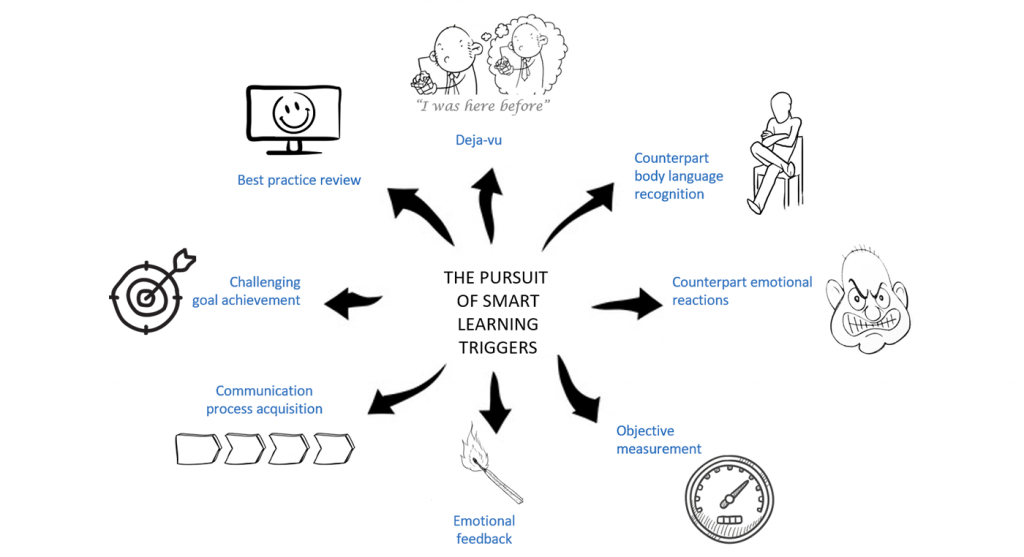
- The counterpart body language
- The counterpart emotional reactions
- Objective measurement
- The acquisition of a communication process
- The real-time impact of the cause-effect of communication
- The challenge to achieve smart goals
- A sense of Deja-vu, which corresponds to the feeling of “I was here before, I know what to expect”, and
- The opportunity to critically review the performance
Learning benefits from the combination of these triggers: trainees activate both the rational and the emotional learning mechanisms.
This article (“How Practicing on Digital Role Play Improves Performance: a Case Study”) shows a very interesting case study of how these learning triggers put together delivered amazing improvement in the conversational performance of a large group of sales people.
It is very important to underscore, however, that the way you design the training program matters a lot.
This article (“SkillGym Digital Fitness: Pure, Adaptive Leadership Training”) explores the subject of how adaptive learning applied to Digital Role Play can make a huge difference in the way people learn and change their behaviors.
The new frontier of AI
The large majority of Digital Role Plays are still designed using very simple branching techniques, where each choice of the user leads to one pre-determined reaction from the simulation.

Unfortunately, this choice, while being quite inexpensive to implement results in overly basic results. In real life, we do not interact in such a simple way.
Each decision we make and every emotion we express are the results of multiple factors merging, making the possible nuances of our behaviors almost unlimited.
There are several good reasons for considering the implementation of AI-based solutions, including a much more authentic trainee experience; I discuss this intriguing subject in-depth in this article (“How AI Helps Delivering a Better SkillGym Training Experience”).
Where to go from here
You may now be interested in learning more about tips to select your next Digital Role Play system. At the bottom of the following article (“Digital Role Plays, the Best Way to Develop Conversational Leadership”) I provide you with a detailed checklist about what to look at when deciding on which platform to adopt.
It is also very important to reflect on how to integrate Digital Role Play into your existing strategy, since too often these types of tools are just placed at the end of a classic course for a quick “follow-up” that, most of the time, does not add any value, which results in underutilization of the enormous power and potential of these kinds of solutions.
Read this article (“Flipping the Leadership Development Strategy with Actionable and Scalable Programs”) to learn more about the best way to truly integrate Digital Role Plays into your L&D strategy.
Finally, if you are interested in discovering how we here at SkillGym deliver the best in class Digital Role Plays, feel free to book a 1-hour discovery call.
I hope you enjoyed the ride!

